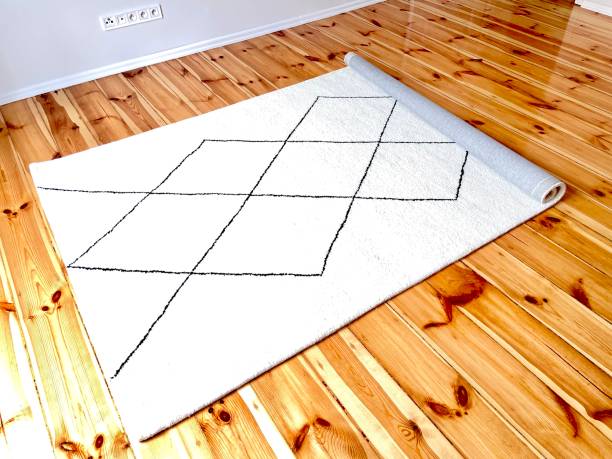Like a conductor’s baton, the living room rug orchestrates visual harmony in your home. It anchors furniture and defines traffic flow. It sets the stage for many of life’s grand moments. What about choosing the correct size? This, my friends, can be a delicate dance – one misstep can throw the entire composition out of rhythm.
This blog will give you the tools necessary to ensure that your rug selection is both elegant and functional.
Anchoring the Ensemble
Imagine a lead violinist setting up instruments on a stage. The rug plays a similar function, unifying sofas, coffee tables, and armchairs to create a cohesive ensemble. Ideally, the legs of the key pieces should rest on the rug to create a visual zone and prevent furniture from looking adrift. The recommended buffer between furniture and the edge is 10-18 inches. This will ensure a harmonious balance.
Tailoring Your Stage
Anchoring is important, but size is not the only factor. Your living room’s unique layout plays a vital role. If you have a long, narrow room, an elongated rug can visually extend the stage. A square room will find its harmony in a large, central rug, which anchors the seating area. For L-shaped arrangements, a duet of smaller rugs that mirror the furniture is more appropriate than a large rug.
The Art of Illusion – Expanding or Contracting the Stage
The art of illusion is a great way to manipulate the perceived size of your space. A rug that is positioned to hug the furniture can visually expand a small room, giving the impression of more space. In a large room, a carpet that is tucked underneath the furniture will create a feeling of intimacy. It’s like dimming lights to make a performance more intimate.
Material Matters: Weaving Texture & Function
The material of the rug adds a layer of complexity to its composition. While a plush, thick carpet is luxurious, it may need a smaller footprint in order not to overwhelm the room. A thinner rug, on the other hand, can be used to anchor a room visually without looking bulky. Don’t forget about functionality. Consider the functionality of your space.
Breaking the Rules for a Unique Melange
Creativity is not limited by rigid rules, even though principles are important. Sometimes, breaking the mold can result in the most compelling compositions. Layer a smaller rug on top of a larger rug to add texture and visual appeal. In an open space, you can use area rugs as a way to create distinct zones, like a reading area or a children’s play area. Each zone will have its musical flair.
Conclusion
Finding the right rug size comes down to understanding the unique dynamics of your living room, your furniture arrangement, and your style. Follow your instincts, explore different sizes, and feel free to experiment. You’ll know when you find the rug that is in line with your vision because it will make your heart sing.

